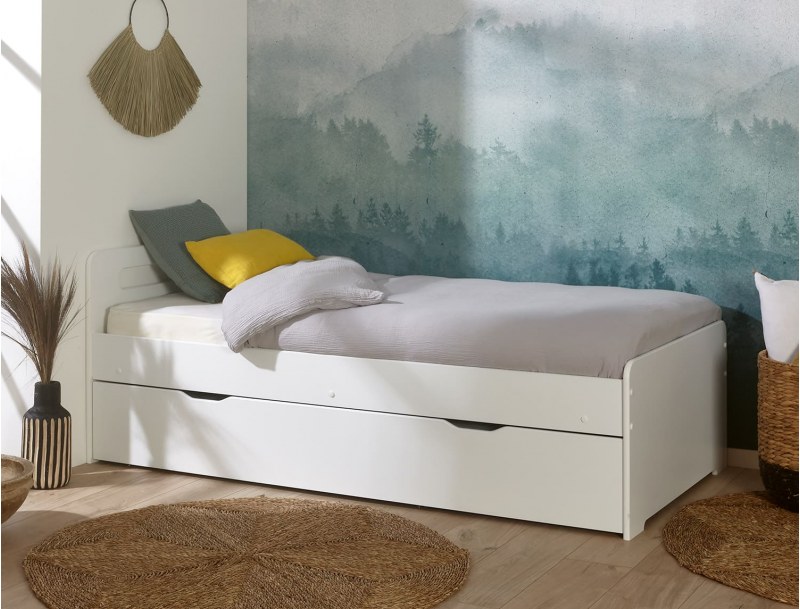The Benefits of a Good Children's Bed on Sleep | Chambrekids
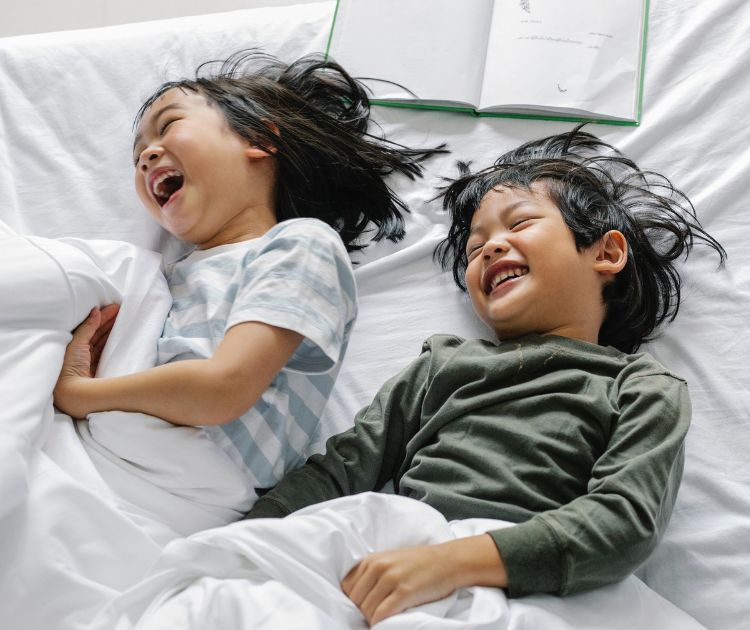
Regardless of the child's age, sleep is of paramount importance for their well-being and proper development. Therefore, it is up to the parents to do everything possible to promote quality sleep for their child. This involves several good practices, including choosing an appropriate children's bed.
Why is sleep important for growth?
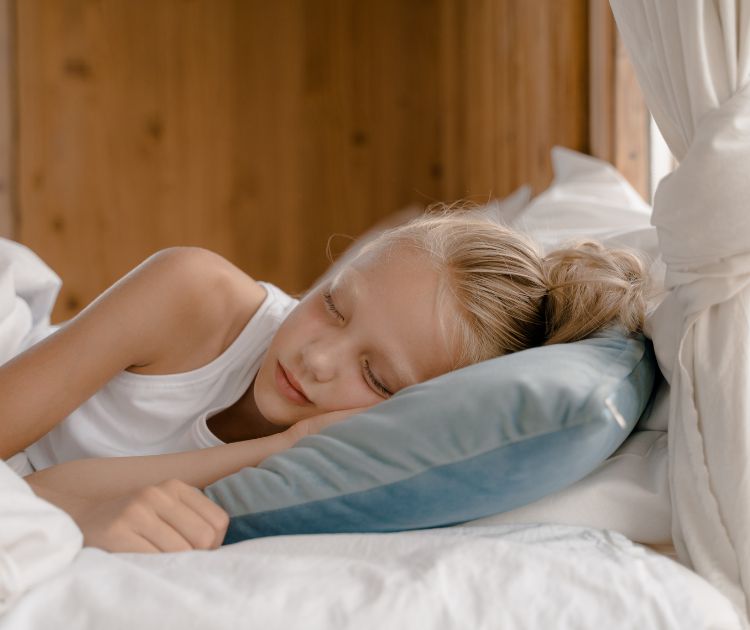
Sleep cycles in children are essential for maintaining their well-being, starting from birth. Indeed, sleep allows for the child's brain development. It particularly affects concentration and promotes learning. In other words, without good sleep, the entire development of the child can be impacted.
Moreover, sleep helps regulate the production of different hormones that can have a broad impact, particularly on stress, appetite, etc. Finally, good sleep helps reduce the occurrence of certain diseases.
A substantial number of sleep hours
The number of hours a child needs is substantial and will decrease as they grow older. Indeed, a child will need:
- 16 to 17 hours of sleep per day from 0 to 6 months
- 13 hours of sleep per day at 3 years old
- 12 hours of sleep per day at 6 years old
- 9 hours of sleep per day at 12 years old
- 8 hours of sleep per day from 20 years old
In summary, a child spends a lot of time sleeping, so it is important that they have an appropriate environment, which includes choosing a suitable children's bed.
Why is it important to choose a good children's bed?
The choice of a children's bed can have a real impact on your child's comfort and well-being, and therefore on their sleep. Indeed, an uncomfortable children's bed or one not suitable for the child's age can disturb them, which will inevitably impact their sleep. Therefore, it is very important to choose an adequate model and ensure that it remains suitable over the years.
How to choose a children's bed wisely?
The children's bed can be chosen based on different criteria.
Dimensions
For your child to have peaceful nights, they must sleep in a children's bed of the right dimensions. There are different sizes of children's beds depending on age. It is recommended:
- A 70x140 cm children's bed up to a maximum age of 6 years
- A 90x190 cm children's bed from 2 years old up to adulthood
In other words, if you have opted for a 70x140 cm convertible baby bed, you can use it until your child is 6 years old. After that, they will need at least a 90x190 cm bed. You can also place your child in a 90x190 cm bed after the crib.
If you have a teenager who tends to develop quickly, they might feel cramped in a 90x190 cm bed. In that case, you can consider opting for a 120x190 cm or 140x190 cm model if the space in the room allows it.
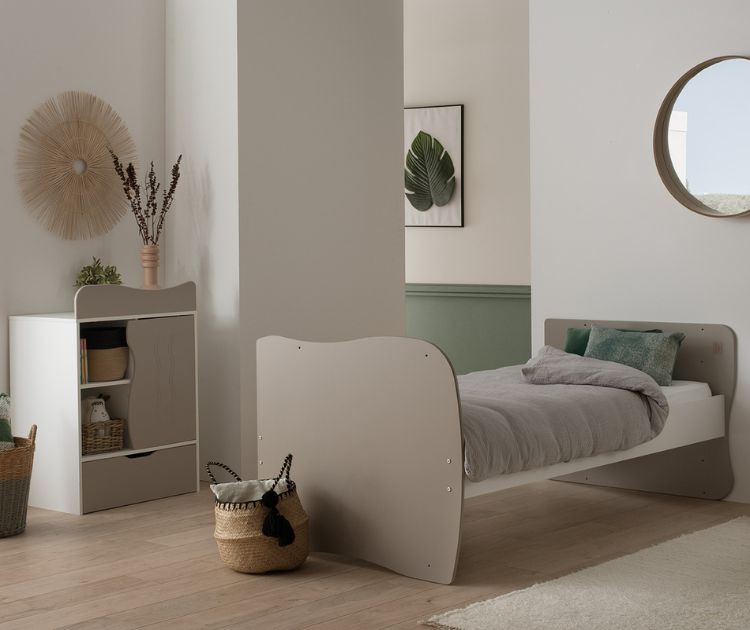
Bed style
Depending on the age and room configuration, you can consider different types of children's beds such as:
- The classic children's bed, which is a basic single bed.
- The trundle bed for children, which has an extra bed in a drawer, like our Féroé 90x190 white trundle bed for example.
- The children's loft bed, it offers a high sleeping area to benefit from more space.
- The bunk bed for children, ideal when two children share the same room.
- The house bed, to give a playful aspect to this piece of furniture.
- The mid-height bed, to create storage space or even a reading corner just below.
Materials used
Finally, the materials used to make a children's bed are also important. Indeed, it is preferable to choose:
- Solid wood (preferably FSC certified to ensure it comes from eco-managed forests)
- Eco-friendly panels with low formaldehyde content
- Solvent-free paint and varnish
The goal here is to make more eco-responsible choices, but also to avoid the presence of volatile organic compounds in the baby's room to preserve their well-being.
How to equip your children's bed?
Once you have chosen the children's bed, all that's left is to equip it to make it a comfortable and suitable sleeping arrangement for your child.
The mattress
Choose a mattress of the same size as the bed that is suitable for the child's sleep (this information is always specified for children's mattresses). You can also opt for natural materials such as bamboo fiber or organic cotton, for example. A children's mattress should be firm and, of course, not deformed.
Duvets and pillows
You can then opt for a comfortable pillow and a duvet. The pillow should be soft while not being too puffy to preserve the alignment of the head with the spine. There are summer duvets, winter ones, and 4-season models. Make sure to choose according to your child's needs.
Bedding
Finally, all that's left is to choose bedding. Prefer natural materials like cotton, for example. Cotton is both healthy and breathable, which is preferable for a children's bed. The presence of the Oeko-Tex Standard 100 label should also be observed for healthier products.











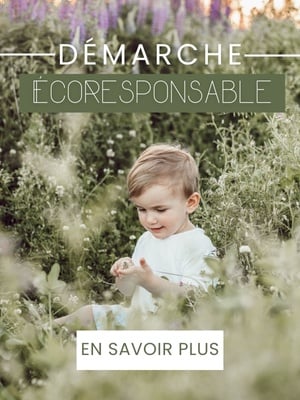

 Choosing the right baby blanket dimensions according to season and age
Choosing the right baby blanket dimensions according to season and age
 How to attach a headboard (with or without drilling): quick and effective soluti
How to attach a headboard (with or without drilling): quick and effective soluti
 Waterproof sheet or mattress protector: the best solution by age group
Waterproof sheet or mattress protector: the best solution by age group
 27 Original, Useful, and Trendy Christmas Ideas for Teens 2025
27 Original, Useful, and Trendy Christmas Ideas for Teens 2025
 Christmas Activities for Baby: Creative Ideas for Home & Daycare
Christmas Activities for Baby: Creative Ideas for Home & Daycare
